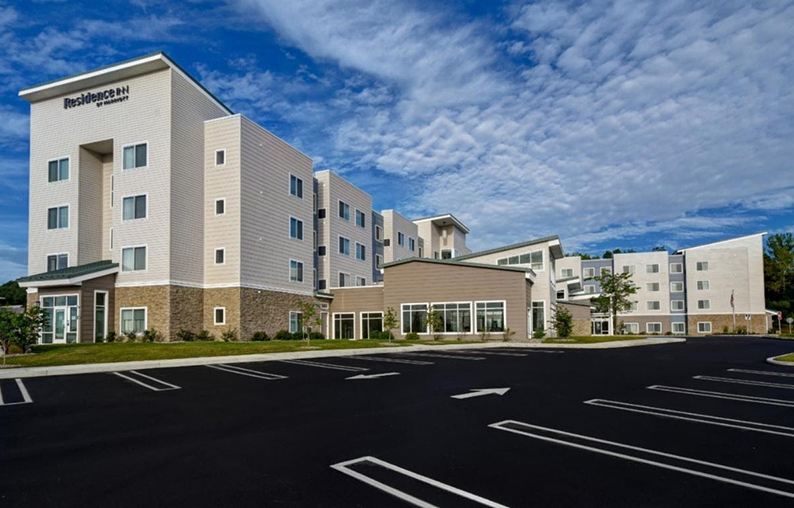News:
Finance
Posted: October 21, 2008
The "what" of buying commercial properties: A focus on multifamily real estate
Lately, I've found myself speaking with investors from across the country about the state of the economy, the debt markets, and other issues relating to the "how, when, and where" of buying commercial real estate property. Surprisingly, however, those subjects have recently taken a back seat to conversations based around the "what" of buying properties.
I once heard that the only person who likes change is a wet baby. It's human nature to stick to what you know. If you've made money owning multi-tenant office property in the past, why stray when searching for an exchange property today?
I say it is time to open up to the idea of diversification by strategically investing in assets classes that you may not have owned before. When property types are viewed historically from an asset class perspective, we find that each sector has unique, enduring characteristics that differentiate it from the others.
Commercial real estate is traditionally divided into five sectors/asset classes: multifamily, office, industrial, retail, and alternative (hotels, golf courses, marinas, etc.). This article is the first in a series of five dedicated to exploring the benefits (and potential pitfalls) an investor should consider when diversifying their real estate holdings into any one of these sectors.
We will start with what is probably the most popular type of investor-owned real estate in the country: multifamily. The National Multi-housing Council estimates that apartments account for approximately one-fourth of the nation's stock of income producing property. Multifamily properties have historically benefited investors with a low volatility of physical occupancy, enhanced tax sheltering, and superior rent flexibility.
Multifamily properties can be as small a duplex or as large as Starrett City, one of the largest residential complexes in the U.S., comprised of nearly 6,000 units across 46 buildings in Brooklyn. Due to the wide range in size and price of multi-unit residential properties, there is accessibility and selection for nearly all levels of investor experience and level of financial resources.
Apartment properties are further divided into urban high-rise, midrise (typically infill properties), suburban garden-style, and small properties. The main problem with small properties is that a single unleased unit can represent a large portion of the total rentable space. In a scenario where you have 2 units, you have only three occupancy levels: 0%, 50%, or 100%. By investing in a multifamily property with numerous tenants, investors can realize a stability that other asset classes often can't provide.
Apartments do not generally see the volatility in vacancy rates that are experienced in multitenant retail or office because they have more units and the units themselves are smaller in size. How likely is it, for example, that an owner of a 400 unit apartment complex would lose 20% of his tenants (80 units!) in one month? Very unlikely. However, it's quite typical to have a single tenant represent that much space in an anchored retail center. If the end of their lease comes around and they choose not to renew, the impact of vacancy and lost rental income would be severe.
Regardless of how many units are in the property, when it comes to cost recovery (also known as depreciation), the entire residential asset class receives a shorter 27.5 year schedule versus 39 years for all other non-residential classes of real property. This is valuable information to keep in mind when evaluating multiple investment options and calculating returns for a residential project versus an office, retail, or industrial property. For example, if you bought both an apartment property and an office building for the same price and their respective incomes and expenses were identical, you'd receive a higher net income after tax from the apartment property than you would the office building.
Another distinct benefit that owning multifamily properties provides is the ability to raise rents to correspond with inflation and the competitive properties surrounding you. As opposed to a long-term corporate retail or office lease with minimal or no annual escalations, owners of apartment buildings can change their rents every day or even throughout the day if they wish. Most apartment leases are only one-year in term, not 3-5, or 5-10 years as with the other asset types I've mentioned.
The major pitfall in multifamily investing is that apartments tend to be management-intensive. The "terrible Ts" of being a landlord (tenants, trash, toilets) often catch up to novice investors who are inexperienced with handling the day-to-day needs of apartment buildings and their occupants. This issue can be easily overcome in the form of hiring a professional management company.
In addition to the aforementioned long-standing advantages of multifamily ownership, numerous market factors make the case to invest in apartments even more compelling in today's market. Tighter mortgage lending standards, steady immigration rates, and the large "Echo-Boomer" demographic (ages 18-28) that are unable to afford home ownership should help the demand for apartment rentals stay high.
Successful real estate investors can, of course, make an argument to stick with what they know. But with some additional self-education through research and the guidance of a competent advisor or broker, investors who haven't owned a multifamily asset before should consider the benefits of including this asset in an investment allocation. If you're not ready to jump in with both feet and buy yourself an apartment home on your own, there are a many ways to get started on a smaller scale. A number of apartment REITs, funds, LLCs, and tenant-in-common programs exist to help you dip your toes in the water.
Josh Slaybaugh is president & CEO of Trade Up 1031, Inc., West Chester, Penn.
Tags:
Finance
MORE FROM Finance
Brookhaven IDA closes on economic incentives for Coco Architectural Grilles
Holtsville, NY A fourth-generation family-owned, custom metal-fabricating business will expand in Holtsville after the Town of Brookhaven Industrial Development Agency (IDA) closed on a package of economic incentives.

Quick Hits





.jpg)


.jpg)